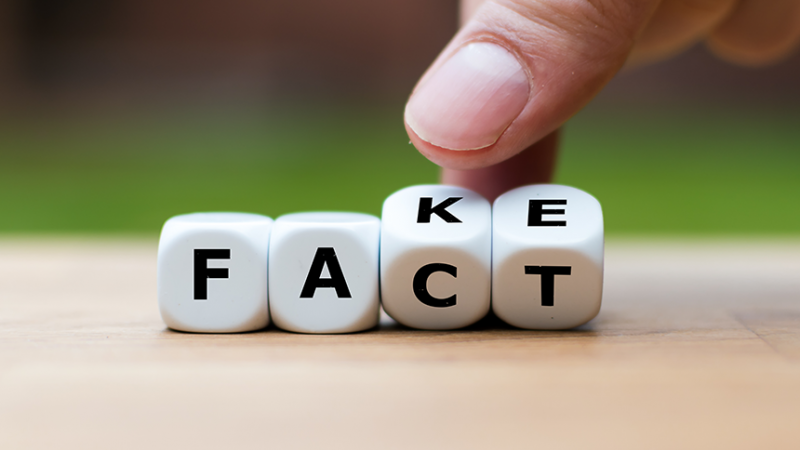‘Tis the season to be vigilant, because elections are coming up. We’re at a point in time where we’re considering who we’ll be voting for in May 2022, so we need to know more about the candidates. However, with election season comes the spread of misinformation. Fake news can easily spread on social media if people aren’t careful enough.
There is a way to fix that, though. Fact-checking can help prevent the spread of misinformation. It’s a pretty useful skill, so it can’t hurt to know how to check when a piece of news is fake or real. That said, here are some tips on how to fact-check so you can detect fake news.
Check the source of the news
Where did you see the article? Who published it? Is the web address (URL) correct? If you found the article on social media, it’s better to be careful since social media is the platform where fake news can spread like wildfire. If the article came from a blog it’s also best to be cautious, because the article may have been written to cater to a specific audience and viewpoint.
It’s also important to take a look at the URL of the article, because there are websites out there that have been designed to mimic official sources. At first glance, some sources might seem like the real deal, but it’s better to be safe and double check the article’s web address to make sure that it’s not a website posing as an organization’s official site.
Read on before you hit Share
Headlines are meant to entice readers to click on an article and give a general idea of what it’s about, but they don’t tell the whole story. That’s why it’s important to read on, and make sure to read and understand the article in full before you hit that Share button.
Check the author
Sometimes even the byline of an article can also be a factor in discerning fake news. Who wrote the story? Can you check their credentials? Most of the time, the byline is clickable so you can go to the author’s page and check for credentials, if their page lists them.
If the author’s page doesn’t include credentials, run a quick search on them. What is their occupation? Are they an expert in the field, and have they written other articles related to the field? Is the author employed at a credible and reputable organization or company? These are important to consider when looking into the author who penned the story you’re reading.
Check the sources used to support the story
Aside from the author’s credibility, it’s also good to check the credibility of the sources that they used to write the article. Sometimes fake news can be easily overlooked because the sources cited seem official — or, the sources used are official and credible, but if you look closely, they don’t actually support the author’s claim.
If the article includes photos, you should also check if the photos are legit. Nowadays it can be pretty easy to alter photos, so it’s possible that the photos have been edited to fit into the story that the author has written. To verify if an image is real or fake, you can use Google reverse image search to check if the photo has appeared and been used elsewhere. If you don’t know how to do a reverse image search, Google has a guide that can help.
Check the publication date
Sometimes fake news isn’t exactly fake. It could be news that was legit, but was published a few years back, so it has no connection at all to current events. Old news can sometimes end up being “recycled” when it resurfaces online, especially if people start sharing without checking the date. So make sure you check the date the article was published before you share it. The news might not be fake, but if it’s a story about something that occurred years ago, then it’s not connected to what’s happening now.
You should also check if the article was updated. Some articles were written while the events were still developing, so they would often be updated whenever new information has been acquired. Aside from the date, websites may also show the time stamps to indicate what time the update was added to the article.
Remember that satire is a thing
You’ve probably seen plenty of memes on social media poking fun at issues and politicians, but remember that satire is not limited to just memes. Satirical columns are also a thing, meaning some authors will write articles for the purpose of entertaining readers with exaggerations. While some satirical pieces can be hilarious, sometimes people might not get the joke and take the content literally, which could contribute to spreading misinformation.
Check your biases
Okay, this tip might be a bit challenging to follow because it can be easy for bias to influence the way you perceive information. Confirmation bias tends to make people lean more towards information that confirms their beliefs and dismiss the information that doesn’t support them. But checking your biases can be a real eye-opener. This is especially relevant now that elections are coming up and we are taking the time to choose our country’s leaders. When you come across a piece of news, take the time to consider if you’re letting your bias influence how you take in the information.
Use fact-checking websites
If you’ve followed all the tips mentioned but are still skeptical, you can try fact-checking websites too. There are a lot of fact-checking websites that can help you verify if a piece of news is fake or true, like FactCheck.org, Snopes, PolitiFact.com, and the International Fact-Checking Network (IFCN). If the article that you’re fact-checking is local news, Vera Files might be better since it’s more focused on Philippine issues.
Yes, fact-checking might sound tedious and time-consuming, but remember: even a quick fact-check can go a long way if it can prevent the spread of misinformation.
Other POP! stories you might like:
This study explains why social media arguments are so toxic
A newbie voter’s guide to the COMELEC Voter Registration process
How algorithms affect the spread of information on social media


